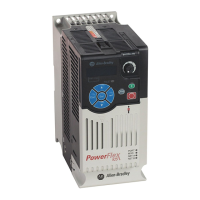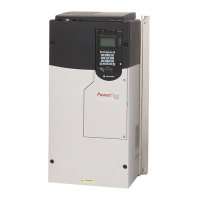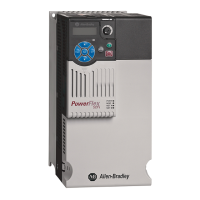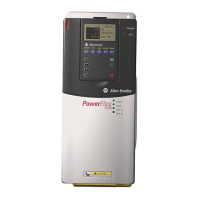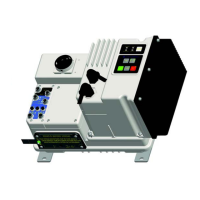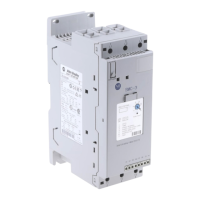Frame 3A and 3B Installation 3-25
PowerFlex® 700L Liquid-Cooled Drive User Manual
Publication 20L-UM001D-EN-P
Table 3.B Frame 3 Power Terminal Specifications
Installing an External/Separate Input Disconnect
An input disconnect can be installed in the line before the drive input
terminals in accordance with local, national, and international codes (e.g.,
NEC/CEC). The disconnect should be sized according to the in-rush current
as well as any additional loads the disconnect might supply. The trip rating
for the inrush current (10-12 times full load current) should be coordinated
with that of the input isolation transformer, if used. Refer to Installing
Transformers and Reactors (Not Recommended) on page 3-23 for
additional information.
Installing Power Wiring from Input Filter Bay to the Power Module Bay
Use the following steps to connect AC input power to the drive:
1. Connect the three-phase AC input power leads (three-wire 380-480V
AC or three-wire 600-690V AC depending on drive nameplate voltage
rating) to the R/L1, S/L2, and T/L3 input power terminals on the:
– Frame 3A Combined Converter/Inverter Power Module: For
terminal locations, refer to Figure 3.2
, Figure 3.18, and Figure 3.25.
– Frame 3A Dual Inverter Power Module: For terminal locations, refer
to Figure 3.2
, Figure 3.18, and Figure 3.26.
– Frame 3B Separate Converter Power Module: For terminal locations,
refer to Figure 3.3
, Figure 3.21, and Figure 3.27.
2. Tighten the AC input power terminal connections to the recommended
torque as shown in Table 3.C
.
Item Name Description
Frame
Size
Wire Size Range
(1)
Recommended Tightening
Torque (+
10%)
Maximum Minimum
➊
Input Power Wire Lugs
R/L1, S/L2, T/L3
Input power
connections on drive
3A 400 MCM 3/0 42 N•m (375 lb•in)
3B 1000 MCM 500 MCM 62 N•m (550 lb•in)
➋
PE Wire Lug Terminating point for
ground wires
3A or
3B
600 MCM #2 AWG 34 N•m (300 lb•in)
(1)
Maximum/minimum sizes that the terminals will accept - these are not recommendations.
!
ATTENTION: Do not route signal and control wiring with
power wiring in the same conduit. This can cause interference
with drive operation. Failure to observe this precaution could
result in damage to, or destruction of, the equipment.
